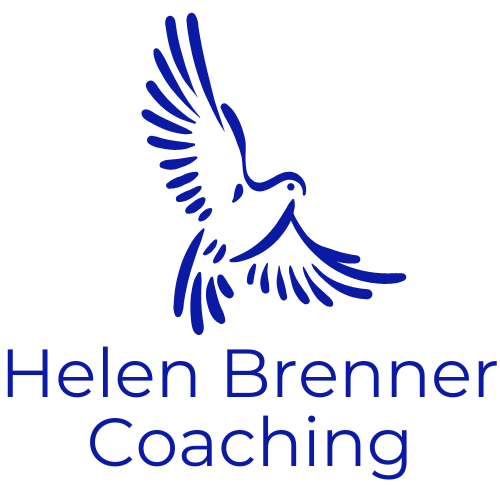Your Opposite Can Reveal Your True Self
Hey There, Let’s Talk About You… and Not-You
Ever thought about the person you’re not? I know, sounds a bit weird, right? But stick with me. What if I told you that looking at your ‘opposite’ could actually help you understand yourself better? It’s like flipping a coin and discovering a whole new side you never knew existed. This isn’t about changing who you are; it’s about discovering who you could be and bringing out the best in yourself.
Why Even Think About the Opposite?
So, what are benefits to thinking about your opposite? It’s simple: sometimes, we get so stuck in our ways that we miss out on a whole world of possibilities. Exploring our opposite self is like having a conversation with a part of us that we’ve kept quiet for too long.
Real-Life Opposites
1. Shy to Outgoing: Picture someone shy, maybe because of past hurts. Now, imagine them as the life of the party. Exploring this outgoing side could help them open up, make new friends, and maybe even heal some old wounds.
2. Playing It Safe to Taking a Leap: We all know someone who never takes risks, always playing it safe. What if they tried on a daredevil’s shoes for a day? They might just find a new passion or opportunity they’d never considered.
3. Keeping It In to Letting It Out: Think about someone who always keeps their feelings bottled up. What would happen if they let it all out? They might find deeper connections and more meaningful conversations waiting for them.
4. Jumping In to Stepping Back: Here’s the flip side. Know someone who’s always acting on impulse, sometimes ending up in a mess? What if they learned to be a bit more risk-aware, thinking things through before diving in? They might find that a little caution can save a lot of headaches.
What’s In It for You?
1. See Yourself in a New Light: This can shine a spotlight on parts of you that you’ve never really thought about.
2. Break Down Walls: It’s about knocking down the mental barriers and stepping out of the box.
3. Walk in Different Shoes: By understanding your opposite, you can get where others are coming from, too.
4. Grow and Glow: Often, we find out we’re capable of more than we thought. Hello, personal growth!
How Do You Meet Your Opposite?
It’s simpler than you think. Start by asking yourself what you’d normally do in a situation. Then ask, “What would the opposite of me do?” It’s not about making a 180-degree turn on everything. It’s about exploring and understanding all the different layers you have.
Here’s a start to help get in touch with your opposite self:
1. If you had to describe your inner opposite, what three traits would stand out?
- This question helps identify traits that are notably different from their current self-perception.
2. Think of a decision you made recently. How would your inner opposite have handled it differently?
- Encourages consideration of alternative approaches to decision-making.
3. What activities do you usually avoid? How might your inner opposite feel about doing them?
- This can uncover hidden interests or aversions.
4. Recall a recent conflict. How would someone completely opposite to you have reacted?
- Aids in understanding different conflict resolution styles.
5. Imagine your inner opposite’s ideal day. How would it differ from yours?
- Offers insights into different preferences and priorities.
6. What kind of music, movies, or books do you dislike? Would your inner opposite enjoy them?
- Helps explore differing tastes and why they might exist.
7. Think of a fear or anxiety you have. How would your inner opposite deal with this fear?
- Encourages viewing personal challenges from a fresh perspective.
8. What qualities do you admire in others that you don’t see in yourself that might actually be showing up as your inner opposite?
- This can highlight qualities that their ‘opposite’ might possess.
9. If you had to argue a point you strongly disagree with, how would your inner opposite approach it?
- Promotes understanding and articulating opposing viewpoints.
10. Consider a habit you dislike in others. Could your inner opposite have this habit?
- Reflects on personal biases and the acceptance of contrasting behaviors.
11. What are your strongest convictions? How might your inner opposite challenge them?
- Encourages exploration of deeply held beliefs from an opposite angle.
12. How do you typically handle stress? What would a completely different approach look like?
- Aids in exploring alternative coping mechanisms.
13. What are your main goals in life? What might your inner opposite prioritize instead?
- Offers a view into different life paths and aspirations.
14. Think about your social interactions. How would your inner opposite engage with people?
- Helps explore different social behaviors and preferences.
15. Consider a recent success. How would your inner opposite perceive or achieve success differently?
- Challenges the notion of success and how it can be viewed from other perspectives.
It’s All About “What If?”
Diving into the idea of your opposite self is like a fun little trip into “What if?” land. It’s about being bold and curious enough to flip your view around, just to see what’s on the other side. Give it a shot — ask yourself,
“If I were totally different, what would I do?”
This isn’t just playful guessing; it can actually show you parts of you that you’ve never really met before. And it’s cool because it also helps you get why people do things in their own unique way.
So, why not play around with the idea? You might be surprised by what you find — there could be sides of you waiting just around the corner, ready to say …

